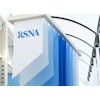Tuesday, December 3 | 12:15 p.m.-12:45 p.m. | IN232-SD-TUA5 | Lakeside, IN Community, Station 5
In this poster presentation, researchers from Washington will provide insight into their catalog on 3D printing materials, which details the materials' CT radiodensity, among other imaging features."3D printing and casting are powerful tools for physically representing imaging data that are increasingly used to produce lifelike models for teaching and operative planning," Dr. Nathan Cross from the University of Washington in Seattle told AuntMinnie.com. "Accurate models should try to reproduce physical properties such as CT number and hardness in order to fulfill their purpose."
Most manufacturers, thus, list the physical properties of 3D printing materials, allowing users to choose the appropriate material when creating patient-specific 3D-printed anatomical models or 3D-printed medical devices, Cross noted. Conversely, the radiographic properties of these materials are rarely provided -- information that is critical when 3D printing realistic image-guided procedural phantoms and also certain medical devices.
To address this issue, the researchers performed CT scans on 75 currently available 3D printing materials -- including thermoplastics, laser-cured resins, photopolymers, and resin-bonded powders -- and recorded various imaging features. Their efforts allowed them to establish a comprehensive library of the radiodensity (in Hounsfield units) of most commercially available 3D printing materials.
The researchers also added to their catalog general information about each one of the 3D printing and casting materials and their approximate cost per volume.
"Multiple materials are available to simulate physiologic tissues, many of which are relatively inexpensive and easy to use in a laboratory setting or through the help of online 3D printing services," Cross said. Clinicians may also use many of these materials to create radiographically realistic phantoms or simulators for CT, x-ray, or fluoroscopy-guided procedures, he added.



















